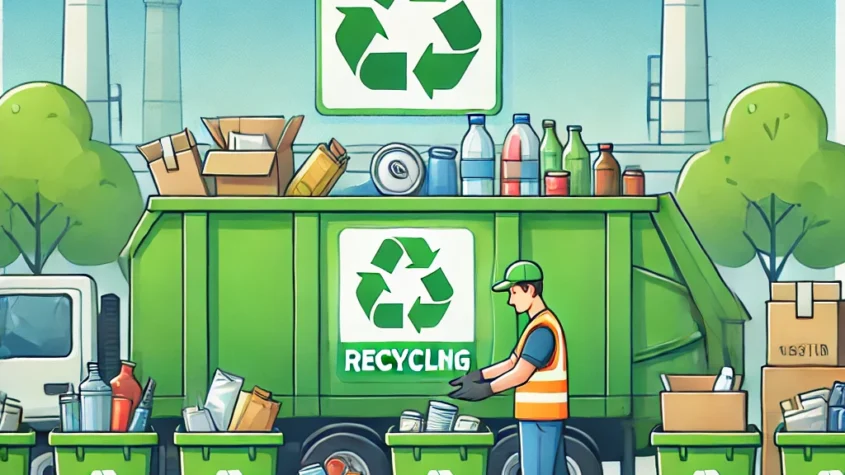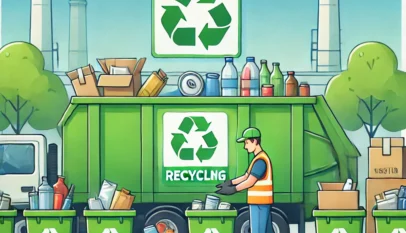
Recycling drop off centers play a crucial role in managing waste and promoting sustainability. These locations provide a convenient solution for individuals looking to dispose of recyclable materials responsibly. By using drop-off services, people help reduce landfill waste, conserve natural resources, and encourage the recycling industry.
Many communities offer various drop-off sites with specific guidelines on accepted materials, making it easier for residents to participate in recycling efforts. Knowing where to go and what can be recycled often encourages more frequent and proper recycling practices.
Engaging with recycling drop-off services not only supports environmental health but also fosters a community commitment to sustainability. By understanding the local options, individuals can make informed decisions and contribute positively to their surroundings.
Understanding Recycling Drop-Off Programs
Recycling drop-off programs provide convenient ways for individuals to responsibly dispose of recyclable materials. These programs ensure that recyclable waste is collected efficiently and appropriately, contributing to environmental sustainability.
How Recycling Drop-Off Sites Work
Recycling drop-off sites are designated locations where individuals can bring their recyclable materials. These sites can be found in various places, including community centers, schools, or dedicated recycling facilities.
Typically, these sites are managed by local governments or waste management organizations. They provide clearly marked containers for different types of materials to encourage proper sorting. Users should check local guidelines for acceptable items and facility hours. Some sites may also offer assistance from staff or volunteers to help with the drop-off process.
Types of Materials Accepted
Recycling drop-off sites accept a variety of materials, which can vary by location. Commonly accepted items include:
- Paper Products: Newspapers, cardboard, magazines, and office paper.
- Plastics: Bottles and containers labeled with specific recycling codes.
- Metals: Cans such as aluminum and tin.
- Glass: Bottles and jars, often separated by color.
Some sites may also accept electronics or hazardous materials, while others may restrict certain items. It is essential for users to verify what materials are accepted at their specific site.
Benefits of Drop-Off Recycling
Participating in recycling drop-off programs offers numerous benefits. First, it helps divert waste from landfills, reducing environmental impact. By recycling, materials can be reprocessed and reused, which conserves natural resources.
In addition, these programs can promote community engagement. They provide residents with an opportunity to contribute to local sustainability efforts. Accessibility of drop-off sites encourages more people to recycle and fosters a culture of environmental responsibility.
Engaging in recycling at these sites can also raise awareness about waste management issues. Increased participation in such programs can lead to improved recycling rates in communities.
Locating and Utilizing Drop-Off Facilities
Identifying the nearest recycling drop-off locations is crucial for effective recycling. Understanding how to prepare materials and follow best practices can enhance the recycling experience.
Finding Nearby Drop-Off Locations
To locate nearby recycling drop-off sites, individuals can utilize several resources. Local government websites often provide lists of these facilities. Additionally, apps like RecycleNation or Earth911 can help pinpoint locations based on zip codes.
Local Resources:
- City or county websites
- Environmental organizations
Many communities also have recycling events that may not be a permanent drop-off location. Checking local bulletin boards or social media groups can yield information about these temporary opportunities.
Preparing Materials for Drop-Off
Preparation is key for a successful drop-off. Individuals must ensure that materials are clean, dry, and sorted. Contaminants can decrease recycling efficiency.
Preparation Checklist:
- Rinse bottles and containers
- Remove caps and labels
- Separate paper, plastics, and metals
Knowing specific requirements for materials can help avoid inconvenience. Some facilities may not accept certain items, like electronics or hazardous waste. Checking ahead will ensure compliance with recycling guidelines.
Drop-Off Best Practices
Adhering to best practices when using drop-off facilities promotes a smoother recycling process. Planning trips during off-peak hours can help avoid long waits.
Best Tips:
- Bring items in manageable loads
- Follow posted signage and instructions
- Practice safety by wearing gloves and being cautious with sharp objects
Staying organized and respectful of facility guidelines fosters a positive recycling experience. Proper disposal promotes community efforts in sustainability and environmental responsibility.
Couples Counsellor Vancouver: Expert Guidance for Strengthening Relationships
In today’s fast-paced world, many couples seek support to navigate their relationshi…









